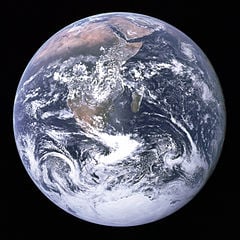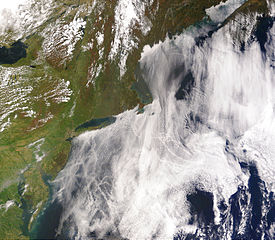This notion of global warming – is it real? And, if it is, what’s the deal?!
First, some background.
Both the National Aeronautics and Space Administration (NASA) and National Oceanic and Atmospheric Administration (NOAA) agree that 2016 was Earth’s hottest year in recent times.
In a Jan. 18, 2017 news release, NASA confided: “Earth’s 2016 surface temperatures were the warmest since modern recordkeeping began in 1880, according to independent analyses by NASA and the National Oceanic and Atmospheric Administration (NOAA).
“Globally-averaged temperatures in 2016 were 1.78 degrees Fahrenheit (0.99 degrees Celsius) warmer than the mid-20th century mean. This makes 2016 the third year in a row to set a new record for global average surface temperatures.”
Based on information noted in the release, estimate certainty is at better than 95 percent.

For those who believe climate change and/or global warming to be the new reality, what’s behind the change? Natural forces: Are they, exclusively, what is to be attributed? Can the shift be blamed on humans? Or, is it likely a combination of both?
And, for those seeking answers, look no farther than the air. Atmospheric carbon dioxide (CO2) concentration is now at an average 403 parts per million.
And that isn’t even the half of it; in fact, it’s barely scratching the surface.
Consider also that ocean acidification is also on the rise from such and, because of this, what we’re just now beginning to witness is the negative impacts on sea life this is having. This is more than just a red-flag raiser. A wake-up call is what it should be.
Back to the first point, regardless of the reason(s) for the rise in atmospheric carbon, the point is it’s there and it has company in the way of other greenhouse gas (GHG) emissions. And, each has its own global warming potential or GWP.
Some is high, some is low.
Unlike carbon dioxide, those gases with a high GWP like methane (CH4) don’t survive in the air as long. But, because CH4 is a potent GHG, its ability to capture and retain heat produced by the sun is greater and hence the high GWP nomenclature applied.
So, the question on the table is: Air pollution and climate: If there’s a connection at all, what is it?
Even more specifically, in the Air Quality Matters post “An evapotranspiration, convection, polluted air connection?” I asked: “Can air pollution affect cloud formation and can this, in turn, impact planet weather and climate?”
And, the answer? From the same article, I wrote:
“In a Nov. 25, 2013 Pacific Northwest National Laboratory (PNNL) news release, discussed is how air pollution may effect cloud formation and what, if any, affect this might have on warming/cooling among other considerations.
“‘Researchers had thought that pollution causes larger and longer-lasting storm clouds by making thunderheads draftier through a process known as convection,’ information in the PNNL release brought to light. ‘But atmospheric scientist Jiwen Fan and her colleagues show that pollution instead makes clouds linger by decreasing the size and increasing the lifespan of cloud and ice particles. The difference affects how scientists represent clouds in climate models.’

And, lastly (from the same post):
“Moreover, upon closer examination of cloud-based ice crystals and water droplets, the study team discovered that irrespective of location, pollution was behind the ice crystal and smaller-sized water droplet formation, information in the release noted.”
Contaminated air as an influencer of a changing climate? You know it!
Article updated: Feb. 5, 2017 at 9:49 p.m. Pacific Standard Time
Both images above: NASA
– Alan Kandel